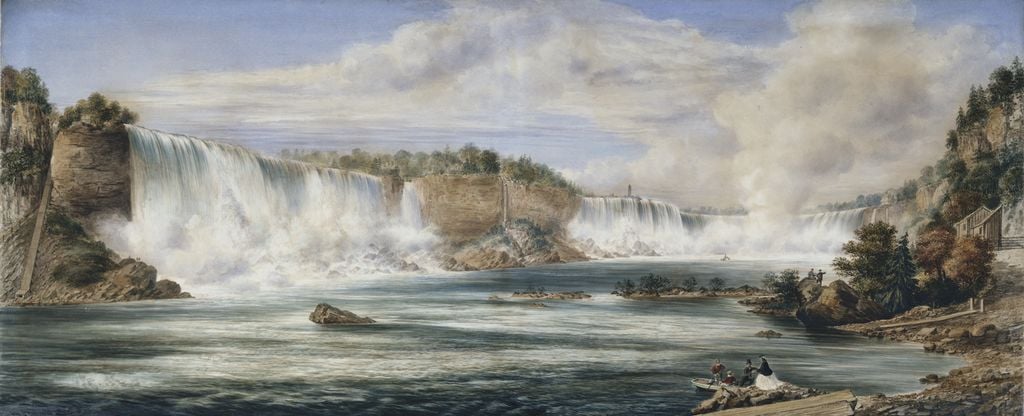
Canada
Explore The Royal Family's close relationship with the region, as well as the diverse artistic traditions represented in the Royal Collection
PROBABLY GENERAL SIR CHARLES GREY (1804-70)
Lower Canada at the close of 1837.
1838RCIN 1123486
Tension had been growing between the English- and French-speaking population in Lower Canada for several decades but by the 1830s it had reached a tipping point. Failing harvests and a cholera epidemic caused widespread dissatisfaction with the government and people began to agitate for reform. In 1834, elections to the local legislature were won in a landslide by the Parti patriote a radical francophone party led by Louis-Joseph Papineau. The party put forward a number of reforms to the British Parliament in London which were all rejected by the Prime Minister, Lord Melbourne. In November, the province rose in an armed rebellion which lasted for a year. John Lambton, Earl of Durham, was selected by the government to serve as governor of both Upper and Lower Canada to find a solution to the crisis. Durham recommended the unification of both provinces into a united Canada and argued for responsible government in the province. This pamphlet, probably authored by Lieutenant-Colonel Charles Grey, one of Durham’s councillors in Canada, describes the beginning of the revolt and gives reasons why it could not succeed. Grey would later serve as Secretary to Prince Albert between 1849 and 1861 before becoming Queen Victoria's Private Secretary from 1861 until his death in 1870.







